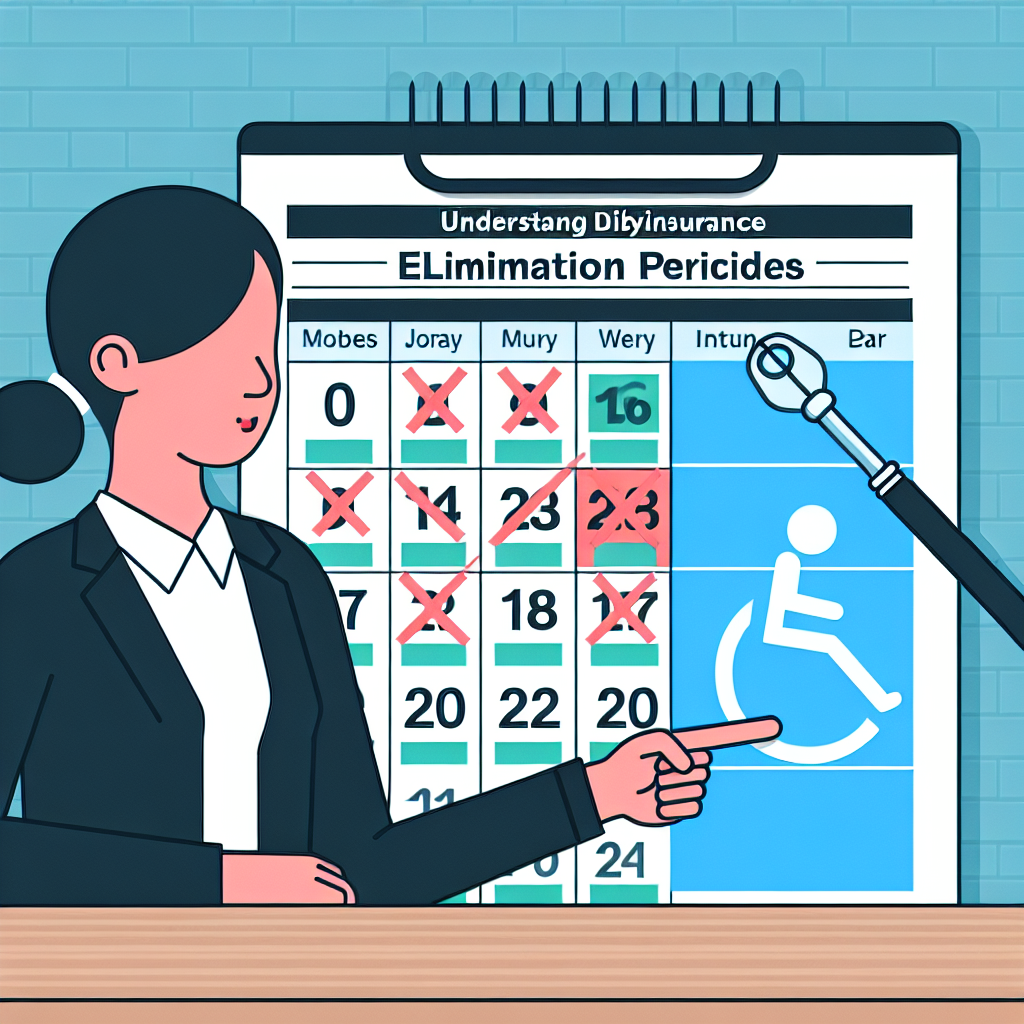Filed under Disability Insurance on
Understanding Disability Insurance Elimination Periods

When planning for the future, safeguarding your income against unforeseen accidents or illnesses is crucial. One effective way to protect yourself financially is through disability insurance. A critical aspect of understanding this form of insurance is getting to grips with the concept of elimination periods. By exploring the nuances of elimination periods in disability insurance, individuals can make informed decisions tailored to their needs and financial situation. This article delves into the complexities, making it accessible while providing key insights into various types of elimination periods, their implications, and how to choose the right one for you.
What is an Elimination Period in Disability Insurance?
An elimination period, often referred to as a "waiting period," is the span of time that must transpire following a disability before benefit payments begin. Essentially, it's a self-insurance period wherein the policyholder is responsible for covering their living expenses. The primary keyword here to consider is "disability insurance elimination periods," which significantly influence both premiums and benefit payouts.
Why Do Elimination Periods Matter?
Elimination periods are integral to disability insurance policies for several reasons. First, they serve to reduce the insurer’s risk. Shorter elimination periods may lead to higher premium costs, as the insurer begins paying benefits sooner. Conversely, longer elimination periods can result in lower premiums but require policyholders to shoulder financial responsibilities for a more extended period before benefits kick in.
Elimination Period Lengths
Understanding the varying lengths of elimination periods is essential. Typically, these durations range from 30 to 365 days. Selecting the appropriate length depends on multiple factors, including your emergency savings, financial obligations, and the nature of your employment.
- Short-term Elimination Periods: These usually last between 30 to 90 days and are chosen by those who may lack substantial savings or have immediate financial needs.
- Long-term Elimination Periods: Extending from 180 to 365 days, these are suitable for individuals with robust emergency funds or secondary sources of income.
Factors Influencing Choice of Elimination Period
The following factors should be considered when choosing an elimination period:
- Financial Cushion: Assess the adequacy of your savings to cover living expenses during the elimination period. A well-padded savings account can afford you a longer elimination period.
- Monthly Expenses: Calculate your monthly expenses, including rent, utilities, groceries, and other necessities, to determine how long you can sustain yourself without a steady income.
- Job Security: If your job offers high stability or supplementary benefits, the reliance on short elimination periods may decrease.
- Secondary Income: Households with dual incomes or additional revenue streams may opt for longer waiting periods to enjoy reduced premiums.
The Role of Emergency Savings
A significant point often discussed by financial advisors is the indispensable role of emergency savings. Disability insurance elimination periods demand an understanding of available finances. Ensuring these reserves are adequate to bridge the gap during the waiting period is a key consideration. Advisors typically recommend maintaining three to six months of living expenses to ensure a comfortable buffer.
Impact of Elimination Periods on Premiums
The choice of an elimination period significantly impacts the cost of insurance premiums. Shorter elimination periods translate to higher premiums due to the decreased period of self-insurance. Conversely, longer periods tend to lower premiums, making them appealing to budget-conscious consumers.
In an ever-evolving landscape of insurance products, it's prudent to remain informed about current industry trends. Recent analyses indicate a growing inclination towards longer elimination periods as individuals aim to lower premiums amidst rising living costs.
Negotiating the Right Balance
Striking a balance between manageable premium costs and financial feasibility during the elimination period is crucial. A professional assessment or consultation with a financial planner can aid in determining the ideal elimination period customized to individual needs.
Industry Insights and Expert Opinions
Insights from industry professionals highlight the significance of understanding disability insurance elimination periods. According to insurance experts, an informed approach to elimination periods not only enhances financial protection but also tailors coverage to individualistic preferences. This adaptability is pivotal in an increasingly personalized financial planning landscape.
Moreover, the insurance sector emphasizes continuous education. Through webinars, workshops, and online resources, insurers aim to empower consumers with knowledge about the complexities of elimination periods. This education ensures policyholders maximize their benefits while minimizing financial strain.
Expert Tip
An invaluable tip from industry advisors revolves around periodic policy reviews. As financial circumstances and life stages evolve, revisiting disability insurance elimination periods ensures ongoing relevance and adequacy of coverage. This proactive approach mitigates potential shortfalls, keeping financial safety nets robust.
Examples and Case Studies
Real-world examples reinforce the importance of thoroughly understanding disability insurance elimination periods. Consider the case of Jane, a freelance graphic designer without a steady paycheck. Jane initially chose a 30-day elimination period, allowing her to manage her expenses with a swift benefit payout post-disability.
In contrast, John, an experienced software developer with a stable job, opted for a 365-day elimination period. John's substantial emergency fund enabled him to benefit from lower premiums, illustrating how tailored choices reflect individual circumstances.
Conclusion
In conclusion, understanding disability insurance elimination periods is a cornerstone of effective financial planning. The choice of an elimination period should factor in personal savings, expenses, job stability, and additional income. By carefully considering these elements, policyholders can ensure a balance between affordable premiums and necessary financial protection. Empowering oneself through education about current industry trends and seeking expert guidance can significantly enhance the decision-making process, laying a solid foundation for future security.
Ultimately, a well-chosen disability insurance elimination period not only secures financial peace of mind but also fortifies individual resilience against life's unpredictable challenges. Leverage this understanding to tailor a comprehensive, personalized insurance strategy that meets both present and future financial demands with confidence.





